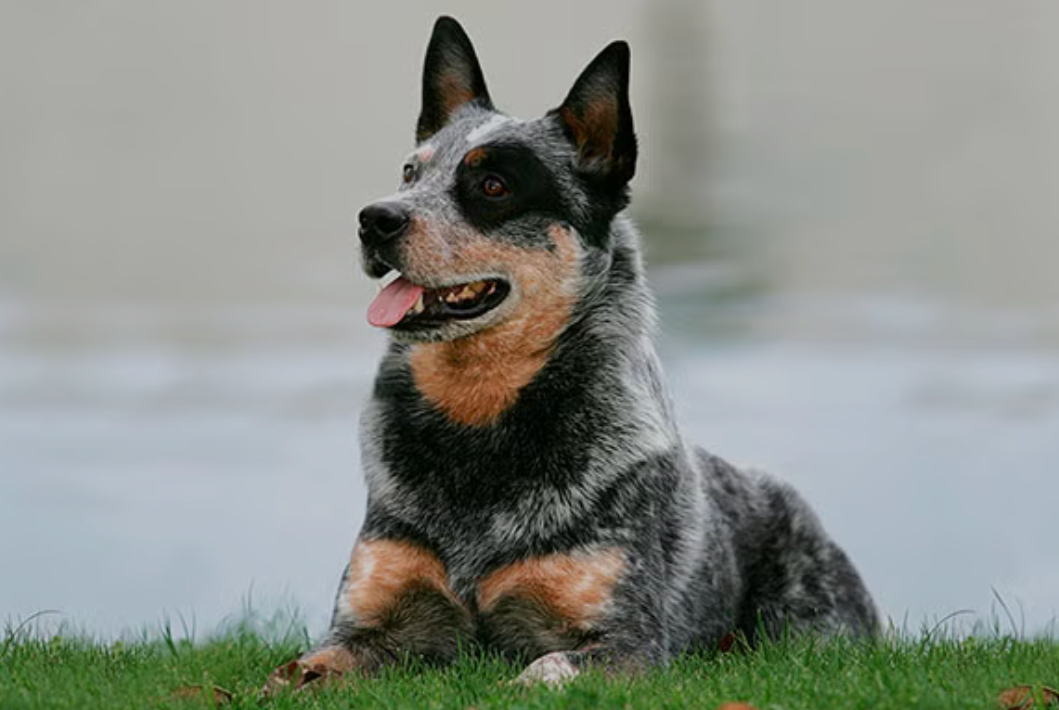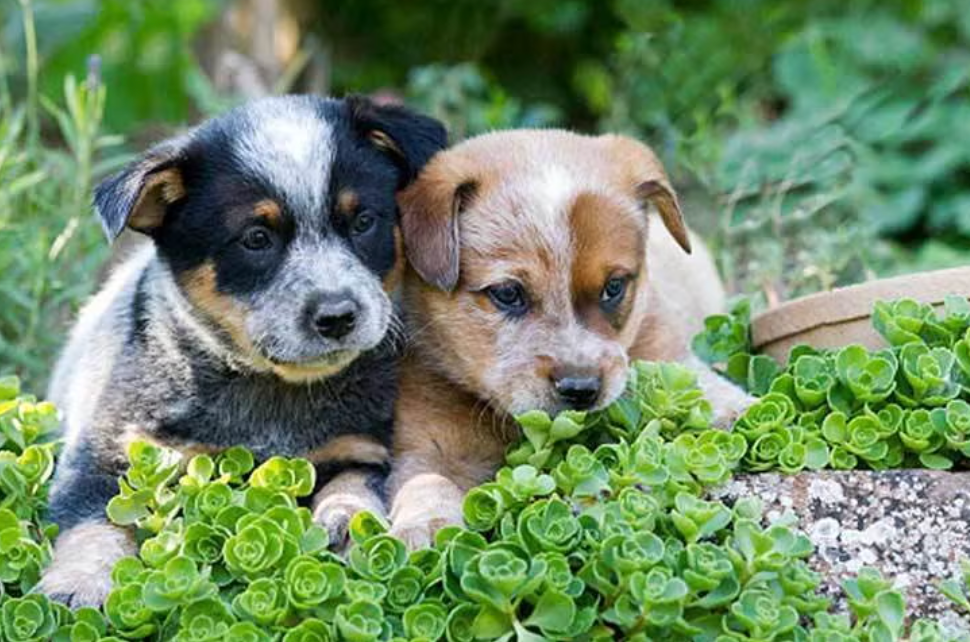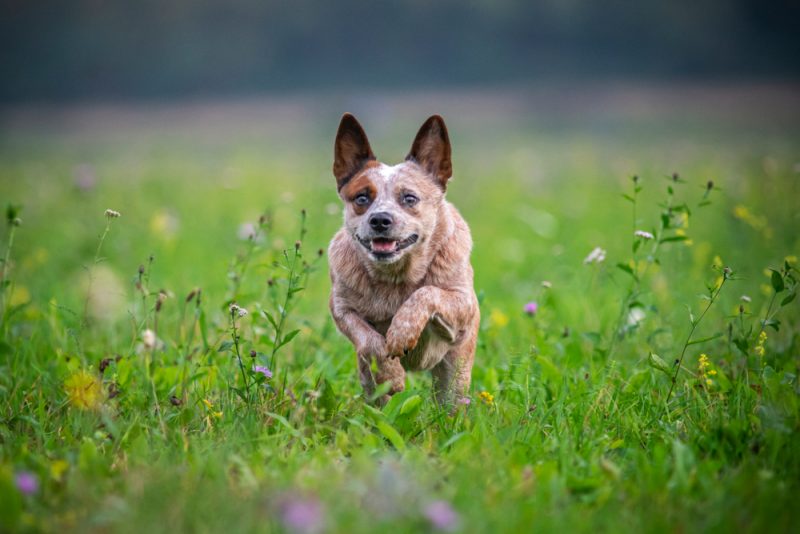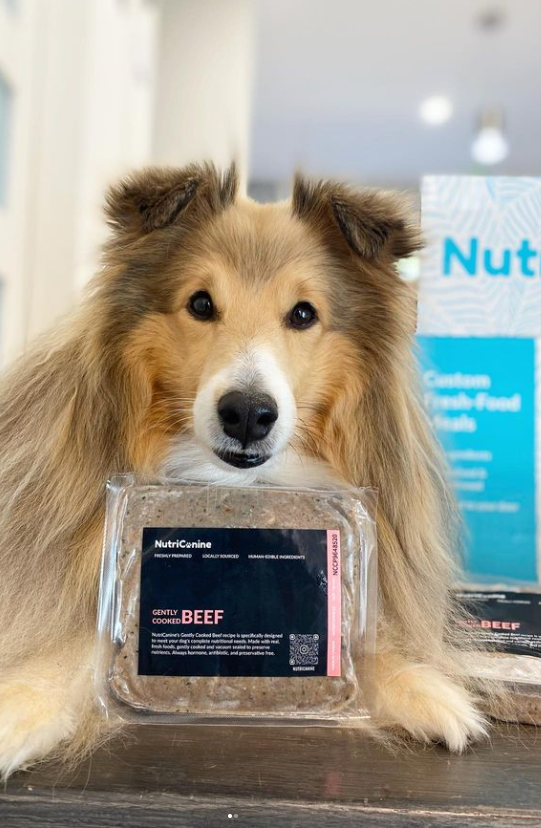“I have three pups, all picky eaters, and they devoured their meals! I’m so happy to have found a quick, easy and super healthy food.”
Quick Stats About the Australian Cattle Dog

Height 17-20 inches

Weight 35-50 lbs
Lifespan 12-16 years
Energy level High
Shedding Moderate
Grooming Low
Get a custom meal plan designed specifically for your Australian Cattle Dog
Get StartedAustralian Cattle Dog: Everything You Need to Know


The Australian Cattle Dog, also known as the Blue or Red Heeler, is an intelligent and energetic working breed originally developed for herding cattle over vast distances in Australia. Known for their agility, stamina, and strong work ethic, these dogs thrive on mental and physical stimulation. Heelers are highly loyal to their families and can be naturally protective. Due to their high energy levels, they require plenty of exercise and a job to do, whether that be herding, agility training, or obedience work. Their independent and sometimes stubborn nature means they need early and consistent training. While they form strong bonds with their owners, they can be wary of strangers. With the right care, training, and nutrition, Australian Cattle Dogs make excellent companions for active individuals or families. Their diet should support their active lifestyle, with high-quality, fresh ingredients to fuel their energy needs. NutriCanine's personalized fresh food meal plans are an excellent choice to support their overall health and well-being.
Create the Perfect Meal Plan for Your Australian Cattle DogCharacteristics and Care
Appearance
The Australian Cattle Dog is a muscular, medium-sized breed with a compact build, built for endurance and agility. Their coat is short and weather-resistant, with distinctive blue or red mottled coloring. They often have patches or speckles of white, black, or tan, and their ears are upright and alert. Their expressive eyes give them an intelligent and focused appearance.
Temperament
Heelers are highly intelligent and independent thinkers. They are extremely loyal to their owners and form strong bonds with their families. While they can be affectionate, they also have a strong herding instinct, which may include nipping or chasing. They require proper socialization to ensure they are well-mannered with other dogs and people.
Grooming
Australian Cattle Dogs have a low-maintenance coat that sheds moderately year-round, with heavier shedding during seasonal changes. Weekly brushing helps reduce loose hair and maintain coat health. Regular nail trimming, ear cleaning, and dental care are also essential for their well-being.
Training & Exercise
These dogs thrive on structured training and consistent mental stimulation. They are highly trainable but require an experienced or dedicated owner who can keep up with their energy. Daily exercise is a must, including long walks, running, hiking, or interactive games like fetch. They excel in agility, obedience, and herding trials.
What Makes an Australian Cattle Dog Unique?
Australian Cattle Dogs are known for their intense work drive, intelligence, and loyalty. Unlike many breeds, they retain puppy-like energy well into adulthood, making them ideal for active owners. They were bred to herd livestock over long distances, giving them unmatched endurance and agility. Their problem-solving skills make them excellent at tasks requiring independent thinking. Unlike some herding breeds, Heelers form deep attachments to their owners and are known as "Velcro dogs," often sticking close to their humans. Their unique coat patterns make every individual dog distinct, and their keen awareness means they are always ready for action.
Create a Meal Plan That Caters to Your Australian Cattle Dog's Unique Needs

Health Considerations for Australian Cattle Dogs
While Heelers are generally healthy dogs, they are prone to certain breed-specific health issues. Understanding these potential concerns and providing the right care and nutrition can help your Heelers lead a long, happy life.
Hip Dysplasia
This breed is prone to hip dysplasia, a genetic condition where the hip joint doesn't develop properly. Symptoms include stiffness, difficulty rising, and limping. Maintaining a healthy weight and providing a nutrient-rich diet with joint-supporting ingredients can help manage this condition.
Progressive Retinal Atrophy (PRA)
PRA is a degenerative eye disease that can lead to blindness. While there is no cure, a diet rich in antioxidants and essential fatty acids can help support overall eye health.
Deafness
Some Australian Cattle Dogs are born with congenital deafness. Responsible breeding helps reduce the risk, but owners should be aware of potential hearing loss and train their dogs with visual signals.
Obesity
Despite their high energy levels, Heelers can become overweight if not given sufficient exercise. A well-balanced, portion-controlled diet with high-quality proteins and digestible carbohydrates helps maintain optimal weight.


Nutrition for Every Stage and Need
Every stage of your Heeler's life—whether puppyhood, adulthood, or their senior years—comes with unique nutritional needs tailored to their age, activity level, and overall health. During puppyhood, they require nutrient-dense meals rich in protein and essential vitamins to support rapid growth and development. As adults, their diet should focus on maintaining energy levels, a healthy weight, and muscle tone, while senior dogs benefit from meals designed to support joint health, cognitive function, and a balanced metabolism. NutriCanine’s fresh, personalized meal plans are crafted to meet these evolving needs, ensuring that your dog receives the perfect balance of high-quality proteins, healthy fats, and essential nutrients at every life stage. By using only fresh, human-grade ingredients and tailoring each recipe to your dog’s specific requirements, NutriCanine helps promote optimal health, vitality, and happiness throughout their life.

Australian Cattle Dog puppies require a diet rich in high-quality protein, healthy fats, and essential vitamins to support their rapid growth and high energy needs. Lean proteins such as chicken, beef, or turkey provide the necessary building blocks for strong muscles and proper development. DHA and omega-3 fatty acids, found in fish oil, play a crucial role in brain development and cognitive function, helping puppies learn and adapt quickly. Calcium and phosphorus are essential for strengthening growing bones and joints, reducing the risk of developmental issues. Antioxidant-rich ingredients like blueberries and carrots support immune health, while probiotics and fiber-rich vegetables promote a healthy digestive system. A well-balanced, fresh-food diet ensures that Australian Cattle Dog puppies grow into strong, agile, and healthy adults.

Active adult Australian Cattle Dogs require a protein-rich diet with moderate fat levels to fuel their high energy needs and maintain muscle mass. Lean proteins like chicken, beef, or fish provide essential amino acids necessary for muscle repair and endurance. Healthy fats from sources like fish oil and flaxseed contribute to coat health and joint function. Easily digestible carbohydrates such as sweet potatoes and brown rice provide sustained energy for their active lifestyle. Additionally, antioxidant-rich ingredients like blueberries and spinach support immune health, while glucosamine and chondroitin promote joint longevity. A fresh, whole-food diet tailored to their activity level helps ensure optimal health and performance.

Senior Australian Cattle Dogs benefit from a diet that is lower in fat but still rich in high-quality protein to maintain muscle mass and overall strength. As they age, their metabolism slows down, making weight management crucial to prevent obesity-related health issues. Joint-supporting ingredients like glucosamine and chondroitin can help reduce stiffness and improve mobility, while omega-3 fatty acids from fish oil provide additional anti-inflammatory benefits. Antioxidant-rich foods such as blueberries and spinach can support cognitive function and immune health. Easily digestible carbohydrates like sweet potatoes or brown rice offer sustained energy without causing digestive upset. A balanced, fresh-food diet tailored to senior needs can help keep them active and comfortable in their golden years.

Weight management formulas with lean proteins and fiber-rich vegetables help overweight Heelers maintain a healthy body condition. High-quality, low-fat proteins like turkey or fish provide essential amino acids without excess calories. Fiber-rich vegetables such as green beans and pumpkin promote satiety, reducing the urge to overeat. Controlled portions tailored to your dog's activity level prevent unnecessary weight gain while ensuring balanced nutrition. Regular exercise, including structured walks, play sessions, and agility training, is crucial for keeping them fit and mentally engaged. A customized meal plan with appropriate calorie levels can help your Heeler achieve and maintain a healthy weight.

Some Heelers have food sensitivities that require carefully tailored diets. Limited-ingredient meals with high-quality, single-protein sources can help minimize allergic reactions and digestive discomfort. Opting for fresh, natural ingredients without fillers, artificial additives, or common allergens like wheat, soy, and corn ensures optimal gut health. Additionally, incorporating easily digestible carbohydrates like sweet potatoes or squash can provide essential energy without causing stomach upset. A well-balanced diet with probiotics and omega-3 fatty acids can also support a healthy digestive system. Personalized meal plans can help address individual sensitivities and keep your Heeler thriving.
Give Your Australian Cattle Dog the Nutrition They Deserve
NutriCanine’s personalized meal plans are crafted to provide optimal nutrition for Australian Cattle Dogs at every life stage. Our fresh, human-grade ingredients are carefully selected to support their active lifestyle and overall well-being. Whether your Heeler needs high-protein meals for energy, joint-supporting ingredients, or a weight-management plan, NutriCanine has the perfect solution. Give your Australian Cattle Dog the best nutrition possible with meals designed just for them.
Dogs 101 Australian Cattle Dog
Ready to Provide the Best Nutrition for Your Australian Cattle Dog?
NutriCanine’s personalized meal plans are designed to meet the unique nutritional needs of your Heeler. Our fresh, high-quality ingredients ensure your dog gets the best possible nutrition. Start your journey to better health and happiness for your Australian Cattle Dog today.
Our Gently Cooked Recipes
- Guided by science
- Made fresh daily
Our recipes, developed by an agronomist, are nutrient-rich, delicious, and complete and balanced, meeting AAFCO guidelines.

Chicken Recipe
Bowl lickin' good - bet we don't keep our recipe a secret! For healthier skin and coat with nutrient-dense broccoli and carrots.
Learn More
Turkey Recipe
Just like your Thanksgiving meal, but specially designed for your dog. For improved digestibility, enhanced by superfood kale and butternut squash.
Learn More
Beef Recipe
Perfect for the pickiest eaters and gluten-sensitive dogs with highly digestible rice and antioxidant-rich berries.
Learn More
Lamb Recipe
Designed for dogs with allergies and sensitivities, enriched by nutrient-packed green beans and carrots.
Learn More
Pork Recipe
Wrap your dog in comfort with every bowl - soothing relief for itchy skin and sensitive tummies, with irresistible flavour.
Learn More Verified Purchase
Verified Purchase